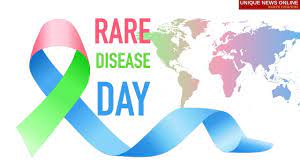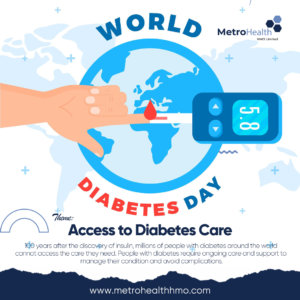World Malaria Day (WMD) is annually observed every April 25. The 2022 WMD will be marked under the theme “Harness innovation to reduce the malaria disease burden and save lives” which focuses on investments and innovation that bring new vector control approaches, diagnostics, antimalarial medicines, and other tools to speed the pace of progress against malaria.
Malaria is a disease that continues to have a devastating impact on the health and livelihood of people around the world, transmitted through the bites of infected female anopheles mosquitoes. An article by the Centre for Disease Control and Prevention USA, 2022 defines Malaria as a preventable and treatable mosquito-borne disease caused by the plasmodium parasite, whose severity varies based on the species of plasmodium. There are 5 parasite species that cause malaria in humans, and 2 of these species – P. falciparum and P. vivax – pose the greatest threat. P. falciparum is the deadliest malaria parasite and the most prevalent on the African continent. P. vivax is the dominant malaria parasite in most countries outside of sub-Saharan Africa. Others are the P. malariae, P. ovale, and P. knowlesi
According to an article from the World Health Organization 2021 regional website, the latest World malaria report shows that there were an estimated 241 million malaria cases and 627 000 malaria deaths worldwide in 2020, and more than two-thirds of deaths were among children under the age of 5. This represents about 14 million more cases in 2020 compared to 2019, and 69 000 more deaths. Approximately two-thirds of these additional deaths (47 000) were linked to disruptions in the provision of malaria prevention, diagnosis, and treatment during the pandemic. The remaining one-third of deaths (22 000) reflect a recent change in WHO’s methodology for calculating malaria mortality (irrespective of COVID-19 disruptions).
Moreso, a paper by IOP Conference Series 2020, opined that there are an estimated 100 million malaria cases with over 300,000 deaths per year in Nigeria.
HOW IS MALARIA TRANSMITTED?
According to the Centre for Disease Control and Prevention USA, 2022, malaria is transmitted when an infective female Anopheles mosquito bites a person. They get infected through a prior blood meal taken from an infected person. When a mosquito bites an infected person, a small amount of blood is taken in which contains microscopic malaria parasites. About 1 week later, when the mosquito takes its next blood meal, these parasites introduce their saliva into the bloodstream of the person being bitten.
Malaria can also be transmitted through blood transfusion, organ transplant, or the shared use of needles or syringes contaminated with blood because the malaria parasite is found in the red blood cells of an infected person. Malaria may also be transmitted from a mother to her unborn infant before or during delivery (“congenital” malaria).
SYMPTOMS OF MALARIA
In an article written by the Cleveland Clinic 2022, the common symptoms of malaria include:
- Chills
- Fever
- Bitter Taste
- Profuse Sweating
- Headache
- Nausea
- Vomiting
- Diarrhea
- Anemia
- Muscle Pain
- Convulsions
- Fatigue
PREVENTION OF MALARIA
A publication by the World Health Organization 2022, the prevention of malaria includes the following:
Vector control is the main way to prevent and reduce malaria transmission. WHO recommends protection for all people at risk of malaria with effective malaria vector control. The two major forms of vector control are:
- Sleeping under insecticide: Bed nets, particularly those treated with insecticides, such as permethrin, help prevent mosquito bites while you are sleeping.
- Indoor residual spraying – are effective in a wide range of circumstances.
Other forms of control include:
- Using insect repellent: These include repellents that contain DEET, picaridin, IR3535, oil of lemon eucalyptus (OLE), para-menthane-3,8-diol (PMD), or 2-undecanoate. Do not use a spray directly on your face. Do not use products with OLE or PMD on children under age 3. Apply repellent to clothing. Sprays containing permethrin are safe to apply to clothing.
- Wearing long-sleeved clothing if out of doors at night.
- Promote environmental hygiene: Clear out weeds, stagnant water, broken bottles, damp clothes, and refuse as they encourage breeding grounds for mosquitoes.
- Use of Antimalarial drugs especially for travelers: Chemoprophylaxis such as intermittent preventive treatment of infants (IPTi) and pregnant women (IPTp), seasonal malaria chemoprevention (SMC), and mass drug administration (MDA) are also meant to prevent malaria.
- Vaccine: Since October 2021, WHO also recommends the broad use of the RTS, S/AS01 malaria vaccine among children living in regions with moderate to high P. falciparum malaria transmission. The vaccine has been shown to significantly reduce malaria, and deadly severe malaria, among young children.
COMPLICATIONS OF MALARIA.
Malaria is a serious life-threatening disease if not effectively managed. The World Health Organization estimates that about 94% of all malaria deaths occur in Africa, most commonly in children under the age of 5.
Malaria deaths are usually related to one or more serious complications, including:
- Cerebral malaria
- Breathing problems
- Organ failure.
- Anemia.
- Low blood sugar
- Stillbirth in pregnant women
- Coma
- Death
CONCLUSION
Early detection and management of malaria decreases complications and prevents deaths. The best accessible treatment, especially for P. falciparum malaria, is artemisinin-based combination therapy (ACT). WHO recommends that suspected cases of malaria be confirmed using parasite-based diagnostic testing (through either microscopy or a rapid diagnostic test) before administering treatment. Hence, investments and innovations that bring new vector control approaches, diagnostics, antimalarial medicines, and other tools to speed the pace of progress against malaria are required.









